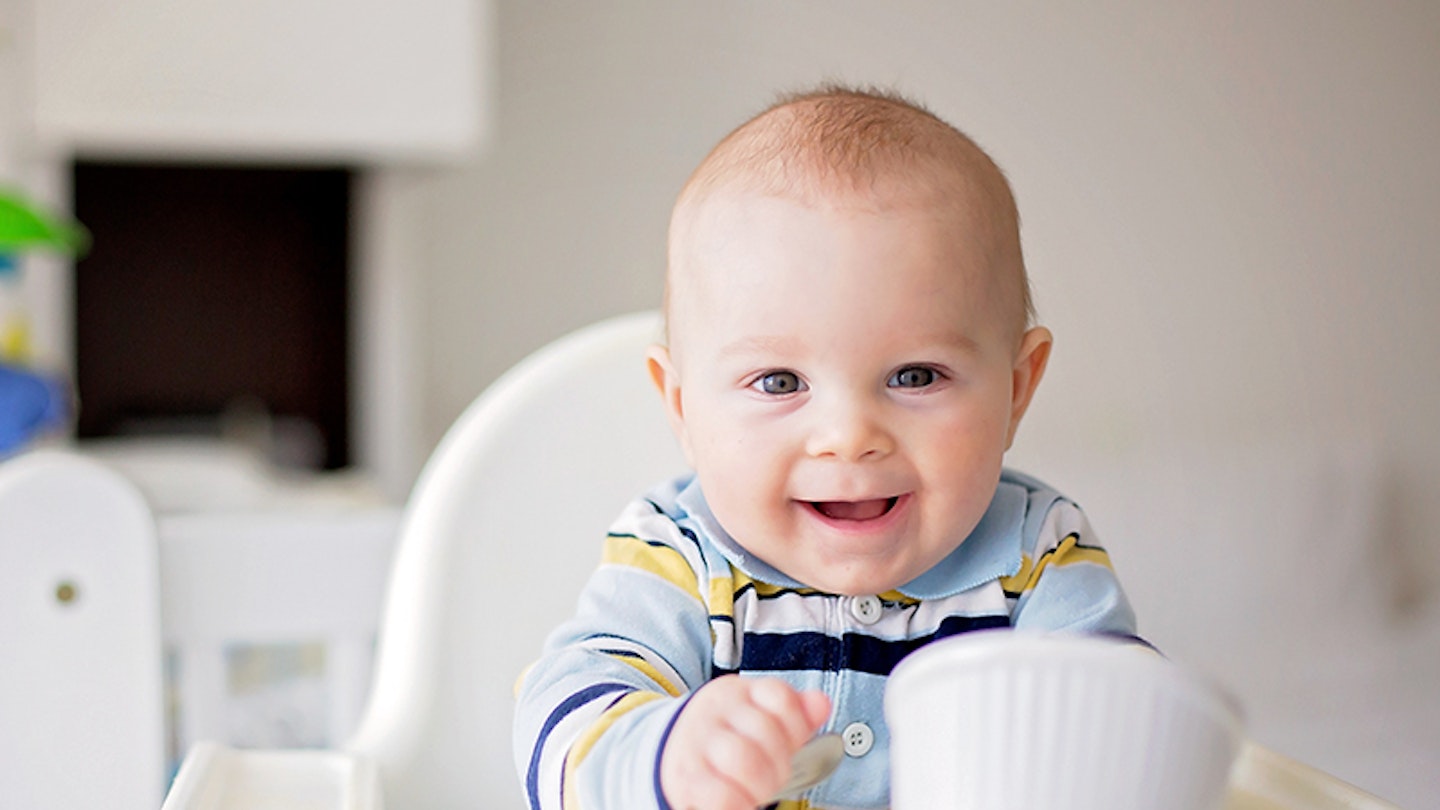Fed-up making food for your toddler only to see it smeared across the walls, the floor or their face?
We’ve got a pain-free plan to help encourage your tot to feed himself, while still preserving your sanity.
Weaning may have been easy to start with, but now that your little one is hitting the toddler stage, mealtimes are set to become a whole lot more challenging. From flat out refusing to eat to simply throwing the food you’ve lovingly prepared all over your freshly mopped floor, the messy reality of toddler mealtimes will have you yearning for the days when you spent the best part of an hour feeding your tot stewed parsnip!
But don’t despair, because there are a few tips and tricks that can help fast-track your little one from fussy to foodie...
How to help your toddler to feed himself:
If your spoon-fed baby is now a spoon-fed toddler how can you foster independent eating? Here are some top tips:
• Mix up meals and snacks: "Begin introducing foods that can be picked up and eaten by hand. These can include crackers, rice cakes or toddler snacks, fruit pieces, chips or potato wedges, veggie sticks such as cucumber or red pepper," says Pediatric Speech Therapist, Stacey Zimmels.
• Start small: Snacks are a good way to get your tot used to aiming his food at his mouth and not up his nose: fruit or vegetables cut into handy sticks, breadsticks and raisins are great snacks to help give your child some sort of ownership over feeding himself. Later you can move onto proper meal time foods like toast, small sandwiches and chopped up chunks of cheese, meat and vegetables he can try picking up with a spoon.
• Make food fun: When they’re just starting to self-feed it’s important to make sure food time is fun. Try playing ‘feed me’, chop up some finger foods and encourage your toddler to put the food in your mouth. Chew each bite enthusiastically, then feed your little one in the same way.
• Lead by example: "Give a fork and spoon at each meal, model how to use it (by eating food from your own plate with cutlery) and suggest they have a try themselves," recommends Stacey. "To change a habit, you need to break a habit!"
• Play with food: Yes, we did just tell you to let your toddler play with their food. But touching and playing with the food on their plate encourages your little one to be creative. Pop fruit on your fingers or stack them. The Spaghetti pick-up game is a firm favourite. Using cooked spaghetti encourages your toddler to make a shape before he puts it in his mouth. You can help by joining in and showing him how he can make various shapes or a smiley face.
• Load up first: "Passing the fork and spoon – loading the utensil for your toddler and passing it to them breaks down the task of using cutlery to the final step of putting it into the mouth. Once they get used to this they can begin to master the whole skill," Stacey says.
• Accept mess: If your little one is a messy eater, try to close your eyes to the chunks of food decorating the floor/the walls/the ceiling. Mess is part and parcel of the toddler years. Resist telling him off too, unless of course he’s deliberately trying to avoid eating, in which case, calmly clear away and give him some of the food again, yourself. It may be that he’s not yet ready to feed himself. After all, there’s always anti-bac wipes...
How to teach a toddler to use a spoon
"Learning to use a spoon is in part developmental and in part, experience-based," explains Stacey. "So they need to be physically capable and also to practice in order to do it. Babies can typically take a loaded spoon to their mouth from around 9 - 10 months and can begin to scoop from a bowl between 12-15 months."
Here are some tips that can help:
• When getting started, go for a spoon with a short handle as it is easier to get it into the mouth.
• Begin by loading the food onto the spoon for them and practice with thicker foods that will stay on the spoon such as mashed potato rather than penne pasta which may fall off.
• To help learning to scoop, start with a bowl rather than a plate and pick one which has high sides. If you can find one which sticks the table this will help keep it stable which in turn makes using the spoon easier.
What cutlery should I use?
“Having the right utensils for your toddler is essential," says Managing Director at doddl, Catherine Dodd. "As a parent, we want our children to enjoy their food and get the most out of mealtimes. Generally, children’s cutlery sets are simply small versions of adult cutlery and tend to have long thin handles that are difficult for children to grip and control.”
“I dreaded mealtimes, watching my children struggle with cutlery and experiencing so much stress and mess every day. This drove me to completely redesign children’s cutlery," Catherine explains.
“Toddlers need cutlery that works with their physical ability. For example, shorter, chunkier handles which make it much easier for them to hold and control. Also, toddler cutlery should help support further development, for example, dexterity and hand-eye coordination which will ultimately help them transition to ‘adult’ cutlery when they’re ready”.
About the author
Emily Gilbert is the Features & Reviews Editor for Mother&Baby and has written for the website and previously the magazine for six years. Specialising in product reviews, Emily is the first to know about all the exciting new releases in the parenting industry.
